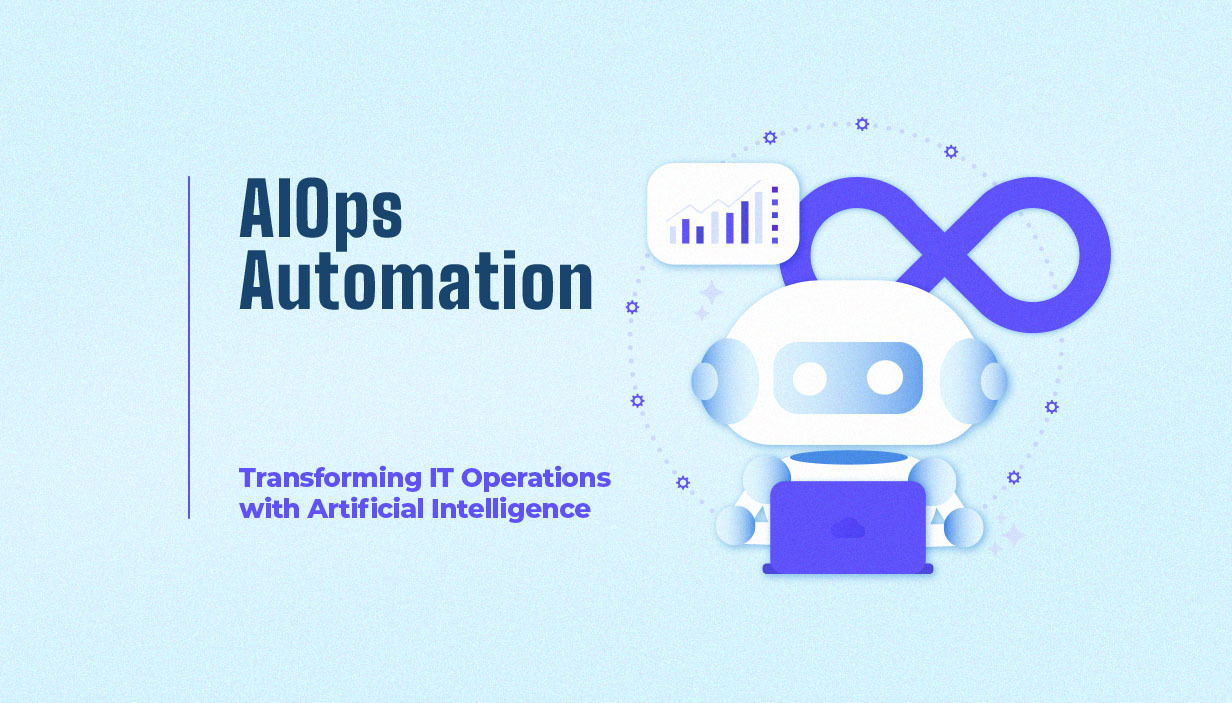Modern IT environments generate massive volumes of data and demand faster, more reliable service delivery. To keep up with this complexity, organizations are turning to AIOps automation, a transformative approach that applies artificial intelligence and machine learning to streamline and enhance IT operations. In this article, we’ll explore what AIOps is, how it works, its key components and use cases, and how CTO2B empowers IT teams to implement it effectively.
What is AIOps Automation?
AIOps, short for Artificial Intelligence for IT Operations, refers to the use of advanced technologies like machine learning, data analytics, and automation to enhance and optimize IT operations. AIOps platforms ingest and analyze data from multiple data sources, including logs, metrics, and events, enabling real time insights and actionable intelligence without manual intervention.
Originally conceptualized by Gartner, AIOps has evolved from traditional monitoring tools into a sophisticated ecosystem that supports event correlation, anomaly detection, root cause analysis, and automated incident response. Today, AIOps is central to modern operations management, especially in hybrid cloud and cloud-native environments.
Key Components of AIOps Automation
Data Aggregation and Normalization
To generate insights, AIOps tools must first collect and normalize performance data from diverse sources. This includes metrics, logs, alerts, and historical data, essential for understanding baseline behavior and spotting anomalies.
Machine Learning and Analytics
Machine learning algorithms power AIOps solutions by analyzing patterns, predicting future states, and identifying potential issues. These algorithms also support big data analytics, enabling IT teams to extract value from vast datasets.
Event Correlation and Root Cause Analysis
By correlating related events across systems, AIOps platforms reduce alert fatigue and help teams identify root causes quickly. This enables faster incident management and less time spent investigating false positives.
Automated Remediation and Workflows
A defining feature of AIOps automation is its ability to respond to issues automatically. This includes triggering scripts, modifying configurations, or rerouting traffic without human intervention, ensuring higher operational efficiency.
Visualization and Reporting
AIOps platforms provide dashboards and visualizations that make it easier to interpret data, track KPIs, and generate compliance reports. These tools offer IT leaders a clear view of system performance and business operations.
How Does AIOps Automation Work?
The AIOps process typically follows a lifecycle:
- Data Collection: Ingest real time data and historical data from across the IT environment.
- Data Analysis: Use machine learning and advanced analytics to detect anomalies and predict failures.
- Decision Making: Correlate events and generate actionable insights.
- Action: Trigger automated incident response workflows.
By minimizing routine tasks and enabling intelligent automation, AIOps helps IT teams focus on critical tasks that drive value.
Implementing AIOps Automation
CTO2B provides a scalable, cloud-native AIOps platform tailored to modern IT environments. Whether you’re operating on AWS, Azure, or Google Cloud, our solutions support data integration, predictive analytics, and automation for cloud infrastructure management, DevOps Automation, and cloud migration initiatives.
Want to get started with AIOps? Book a consultation to explore how we can help implement automated intelligence into your operations.
Benefits of AIOps Automation
Adopting AIOps offers transformative AIOps benefits:
- Reduced Operational Costs: Automating alerts and responses decreases reliance on manual labor and reduces downtime.
- Faster Incident Detection and Resolution: Real-time anomaly detection and automated remediation drastically improve incident response times.
- Improved System Reliability and Uptime: AIOps proactively mitigates risks before they escalate, supporting better SLAs.
- Enhanced Collaboration and Visibility: Unified dashboards and analytics break down data silos, improving collaboration across IT operations teams.
- Enabling Digital Transformation: Supports agile operations and aligns IT strategy with broader digital transformation initiatives.
Common Use Cases for AIOps Automation
Incident and Event Management
AIOps automation plays a vital role in enhancing incident management across modern IT environments. By leveraging advanced analytics and real-time data processing, AIOps platforms continuously monitor performance data and system logs from multiple data sources. This enables rapid detection of abnormalities and service-impacting events before they escalate into costly service disruptions. With automated incident response mechanisms, the system can trigger alerts, apply remediation workflows, and even initiate service recovery without human intervention. This results in faster mean time to resolution (MTTR), improved operational efficiency, and reduced stress on the IT operations team.
Anomaly Detection
In highly dynamic and distributed environments, especially those spanning hybrid cloud architectures, manual anomaly detection becomes unscalable. AIOps solutions address this challenge through machine learning algorithms that learn the normal behavior of applications, users, and infrastructure components. These tools continuously analyze real time data to spot deviations that may indicate an outage, breach, or performance degradation. Automated detection allows operations teams to identify root causes faster, apply targeted fixes, and minimize business impact. This level of intelligence for IT operations is critical for maintaining a stable and secure IT environment.
Predictive Analytics and Capacity Planning
Predictive analytics is one of the most valuable AIOps capabilities. By analyzing historical data and applying machine learning, AIOps platforms help forecast resource utilization trends across compute, storage, and network resources. This enables data-driven decisions about infrastructure scaling, capacity planning, and budget forecasting. Whether it’s provisioning additional servers during peak demand or reducing idle cloud resources to lower costs, AIOps automation supports efficient cloud infrastructure management. For teams involved in cloud migration or supporting digital transformation initiatives, this forward-looking insight ensures smoother transitions and better alignment with business objectives.
Cloud and Hybrid Infrastructure Management
Managing operations across hybrid cloud and multi-cloud environments introduces complexity that traditional monitoring tools can’t handle alone. AIOps platforms bring centralized visibility by aggregating event data from various environments (public cloud, private infrastructure, and on-premises data centers) and applying correlation logic to understand system-wide performance. They also facilitate automated response and policy enforcement across diverse platforms, improving operational control and reducing silos between environments. By supporting a unified view and consistent automation across hybrid cloud setups, AIOps solutions simplify cloud computing operations and strengthen digital resilience.
Security and Compliance Automation
Security and compliance are top concerns in any modern IT strategy. AIOps automation enhances security by integrating with existing monitoring tools to detect suspicious activities, misconfigurations, or policy violations in real time. By correlating data from logs, network flows, and performance metrics, AIOps platforms can identify potential vulnerabilities and initiate remediation workflows automatically. Additionally, AIOps ensures ongoing compliance through automated auditing, logging, and reporting features, making it easier for organizations to meet standards like GDPR, HIPAA, and ISO 27001 without manual overhead. This proactive approach to security and governance reduces risk and enhances trust across digital services.
Final Thoughts
AIOps automation is transforming how IT operations are managed, offering intelligent solutions to challenges posed by complex infrastructure and constant change. As enterprises evolve through digital transformation, adopting AIOps enables proactive, agile, and resilient operations.
Whether you’re addressing latency issues, struggling with visibility, or scaling across hybrid environments, CTO2B can help you leverage the full power of AIOps solutions.
Ready to transform your operations? Explore our DevOps Automation and Cloud Infrastructure Management services.
FAQs
What does AIOps stand for?
AIOps stands for Artificial Intelligence for IT Operations, a practice that combines big data, machine learning, and automation to enhance IT performance.
What is AI in automation?
AI in automation refers to the use of machine learning algorithms to perform routine tasks, identify trends, and execute actions without human input.
What are the four key stages of AIOps?
The four stages are: data collection, data analysis, decision making, and automated action.
What is the difference between AI and AIOps?
AI is a broader field encompassing intelligent machines, while AIOps specifically applies AI to optimize IT operations.
More reading material:


